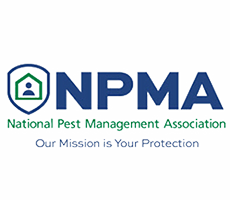
Rocklin Firebrat Control
Serving Roseville, Folsom, Citrus Heights, & the Surrounding Areas
What Are Firebrats? Why Are They Considered Pests?
Firebrats aren’t known as destructive pests, but they can still cause you problems. Find out how.
Firebrats, also known as Thermobia domestica, are insects that belong in the Lepismatildae family. They are commonly referred to as “bristletails,” together with their cousins, Silverfish. This is because of their three tail-like appendages that protrude at the ends of their abdomens. Firebrats can grow up to 12 mm (0.4 inches) long, but their antennae and tails make them seem much bigger. They have flat, elongated, and segmented bodies covered in grayish-brown scales with dark spots, which create a mottled armor-like appearance.
These insects lack wings. Instead, they move by running in a quick, distinct, wriggling motion, similar to how a fish swims. They are capable of moving sideways too. Firebrats’ size and movement allow them to hide in small crevices, making it hard to get rid of them.
Female firebrats can start laying eggs at 1.5 to 4.5 months of age. They need the right temperature to lay eggs, about 90 to 106 degrees Fahrenheit (32 to 41 degrees Celsius). They can lay up to 6000 eggs in their lifetime, with several generations hatching each year. Eggs are laid in groups of 50 to 60 and hatch after 12 to 13 days of incubation. The nymphs go through several times of molting before reaching maturity in 2 to 3 months. Adults continue to molt over their lifespans, and they can live for 3 to 5 years.
Firebrats can be found all around the world and are considered pests indoors.
What Do Firebrats Want?
Firebrats generally want warm temperatures and humidity. They are nocturnal scavengers. They hide in dark, hot, and humid areas during the day and then search for food at night. Their diet consists of a lot of things. They are not picky eaters. They are general feeders that can consume starch from just about anything. Firebrats can eat wood, paper, glue, flour, silk, cereal, dog food, cotton, and many others. They also like eating protein-rich products like dried beef, beef extract, and dead insects. These insects feed on whatever is convenient and near their hiding grounds.
As heat-lovers, firebrats live in unusual places you won’t expect to find insects. They gather toward areas that are 90 degrees Fahrenheit or hotter. You’ll often see them hiding near ovens, furnaces, water heaters, hot water pipes, and other heat-producing equipment. They can also be found around heating vents.

Highly Regarded In Our Community
How Do I Get Rid of Firebrats?
Getting rid of firebrats is not an easy task. You can use a couple of methods to reduce or manage their numbers eventually, like sanitation, de-humidification, use of insecticides, and habitat modification. However, it is still advisable to get professional help for the best results.


What Sets Us Apart? Trust the Pros
-
We offer free consultations and limited termite inspections for homeowners.
-
We have been serving the local area for over 20 years.
-
Our team of professionals has decades of experience in the industry.
-
We offer a variety of Programs for you to choose from.
-
Our "no additional cost" warranty on maintenance means if the bugs come back, so do we.
-
We strive to offer quality service with a reputation for integrity, and we stand by our word.


Highly Rated By Friends & Neighbors
-
He was very thorough and polite. Trudy G.
-
They came out , did a complete inspection with photos and a detailed report. Glen C. Roseville, CA
-
I highly recommend this company to anyone in need of pest control. Larry G. Sacramento, CA
-
They Do a Thorough Job Each Visit Rosina K.
-
They Are One of a Kind Patricia F.
-
Don and Dave Are Great! Tyler Q.
-
I Am Very Happy With Their Level of Service Valleri C.
-
Fleas Have Disappeared Like Magic Suzan H.
-
Highly Recommend! JB H.










